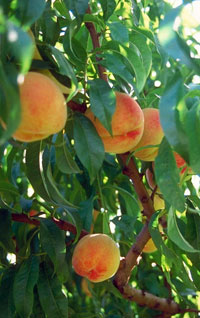 While looking for recipes for this week I kept getting drawn back to old cookbook from the 50s and 60s that I have in my collection. It seemed that baked and broiled tomatoes were all the rage but thinking of putting a beautiful heirloom into the oven and baking it until soft and mushy seemed to border on blasphemy. Oh no!
While looking for recipes for this week I kept getting drawn back to old cookbook from the 50s and 60s that I have in my collection. It seemed that baked and broiled tomatoes were all the rage but thinking of putting a beautiful heirloom into the oven and baking it until soft and mushy seemed to border on blasphemy. Oh no!
At the same time I cannot count the number of tomatoes I've eaten raw since June. I needed something different, something that was hearty enough to be a side or main dish.
This recipe, a tomato and zucchini gratin, seems to be the most basic thing ever. In fact, I made it from a conversation with Adam who actually created the same dish a few weeks ago during a packaging shoot. And it's right up my alley — a few ingredients, cheese, substantial enough to be an easy supper, and cheese. Did I say that already?

 Living in Southern California, we're frequently accused of being citizens of LALA land, a region of delusions where the inhabitants have lost touch with nature because there are no seasons. But there
Living in Southern California, we're frequently accused of being citizens of LALA land, a region of delusions where the inhabitants have lost touch with nature because there are no seasons. But there  I have no children, not even a dog or a cat. But I'm considering adopting. Adopting a peach tree that is. Near Fresno, farmer Mas Masumoto and his family grow lovely heirloom varieties of peaches including Sun Crest and Elberta. Their peaches are organic, fragile, absolutely delicious and only available by adoption.
I have no children, not even a dog or a cat. But I'm considering adopting. Adopting a peach tree that is. Near Fresno, farmer Mas Masumoto and his family grow lovely heirloom varieties of peaches including Sun Crest and Elberta. Their peaches are organic, fragile, absolutely delicious and only available by adoption.  Strawberries, blackberries, and blueberries are coming into season and what a good season it is! There is nothing like the freshness of local produce, the best of summer’s offerings, and the memorable taste these fruits create. Unless, though, you can eat pints of fresh berries every day, these delicacies of nature are not long lived on the shelf…YET…there is a way to enjoy their flavor for days in a variety of ways!
Strawberries, blackberries, and blueberries are coming into season and what a good season it is! There is nothing like the freshness of local produce, the best of summer’s offerings, and the memorable taste these fruits create. Unless, though, you can eat pints of fresh berries every day, these delicacies of nature are not long lived on the shelf…YET…there is a way to enjoy their flavor for days in a variety of ways! The trouble with going to the farmers’ market is that everything looks so gorgeous I buy enough to feed everyone in my zip code. Then I go home and realize that I actually have to do something with all this bounty, as in, cook it, at which point I have been known to utter a mild curse.
The trouble with going to the farmers’ market is that everything looks so gorgeous I buy enough to feed everyone in my zip code. Then I go home and realize that I actually have to do something with all this bounty, as in, cook it, at which point I have been known to utter a mild curse.
